Zagreb Brewery Invests 18 Million Kuna in Zapresic Logistics Centre
September the 23rd, 2022 - The Zagreb Brewery (Zagrebacka pivovara) recently presented its brand new Zapresic logistics centre, into which they've invested close to 18 million kuna.
As Poslovni Dnevnik writes, the Zagreb Brewery presented its impressive recent investment in a new logistics centre, which will also double up as a distribution and commercial centre in Zapresic near the City of Zagreb.
The investment that was presented in the form of the new Zapresic logistics centre is a continuation of this well known company's wider investment cycle in the expansion of its overall production and storage capacities.
"Our new investment cycle marked this very important year for us, in which we celebrate 130 years of existence," said the President of the Management Board of the Zagreb Brewery, Miroslav Holjevac.
This year's investment cycle, he said, is important because it increases competitiveness on the market and the quality of customer service. He also noted that back in June this year, an investment of an even higher 64 million kuna was presented in the form of a technologically advanced line for filling and packing cans in their production facility in Zagreb.
The investment in this new Zapresic logisitcs centre has worked to successfully expand the company's logistics areas and covered storage areas as well as a truck terminal, which will ensure a safer and easier flow of traffic.
Additional storage areas necessary due to the increased production capacity and new product range have also been secured. 5,400 square metres of storage halls and an additional 9,000 square metres of external logistics areas were constructed, including a brand new truck terminal.
For more, make sure to check out our dedicated business section.
Interview: Wild Mushroom Hunting in Zagreb County in Autumn
October 22, 2021 – There's a riot of colour in the branches of trees right now. What better time to go mushroom hunting in Zagreb County?
Autumn in Croatia is the perfect time to explore nature. The country's mountainous regions are currently being enjoyed by walkers and hikers. In less hilly regions, people take to walking the forests and riversides. There, an eruption of colour as the trees respond to the season – red, orange, yellow, purple, brown. Autumn's colours are epic. But, they're not around forever. Catch them while you can.
One resident who is sure to take in the full range of autumn's splendor is Hrvoje Banaj. An outdoor enthusiast from near Zagreb, at weekends, he can be found exploring the forests and mountain of Medvednica, or somewhere else around Zagreb County. He's been walking the woods since he was a child, accompanied by his father, who taught Hrvoje about mushrooms.
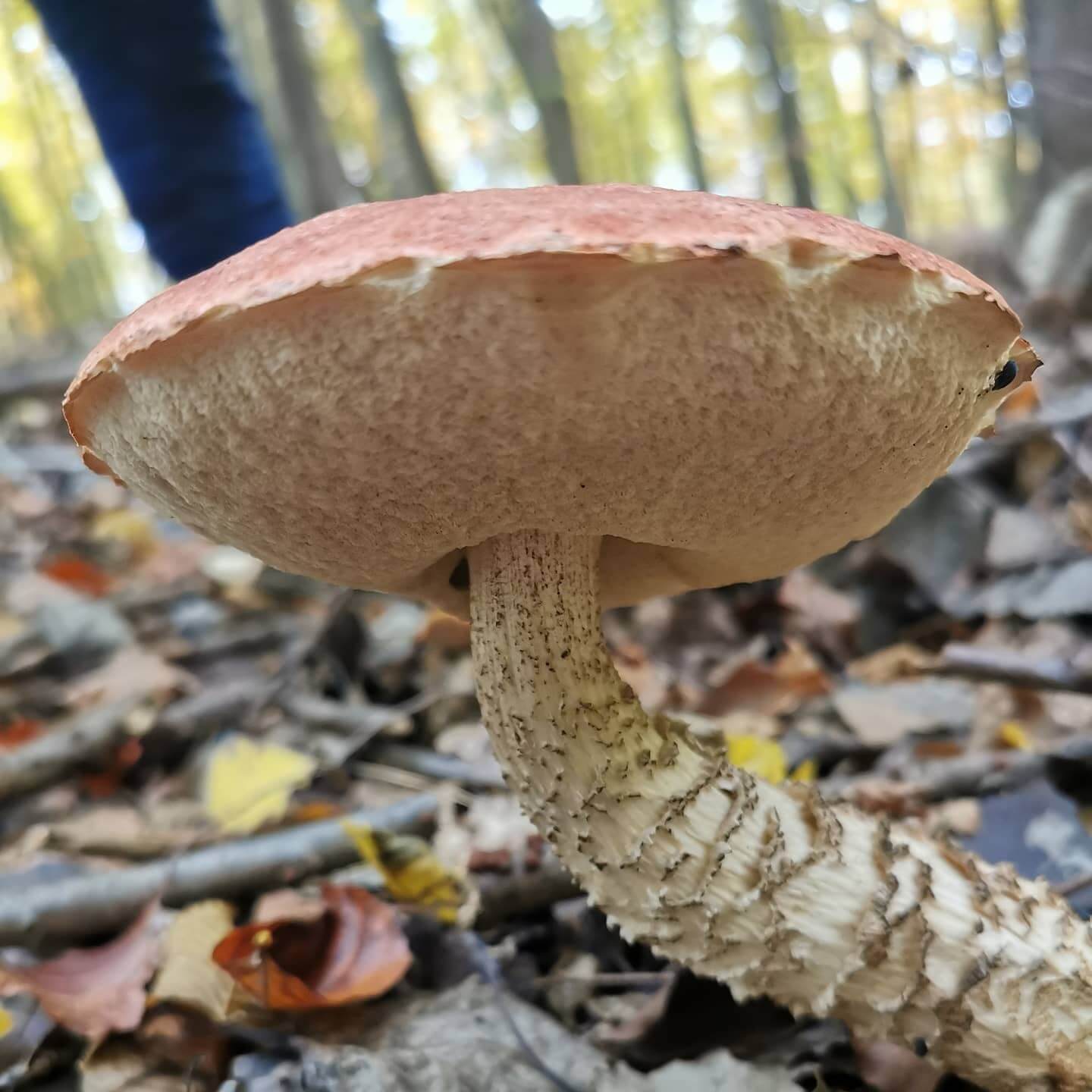
You can collect wild mushrooms across much of Croatia. But, Hrvoje thinks mushroom hunting in Zagreb County is particularly good. Certainly, you can find a surprising bounty in the woods of Zagreb County, as TCN found out last year on a truffle hunting trip.
There are groups of wild mushroom enthusiasts in Croatia. Also, you can find some expert forest guides who know about identifying edible mushrooms in the wild. However, it's not incredibly common to come across someone in Croatia who has that knowledge and who speaks English. Therefore, we couldn't pass up the opportunity to speak with Hrvoje to ask him a little about his experience of mushroom hunting in Zagreb County.

My name is Hrvoje. I grew up in Zaprešić and I still live there. I attended university in Zagreb, where I studied German language and literature and phonetics. Also, my first course was organ playing. I'm a concert organist.
I've been hunting mushrooms since I was 5 or 6 years old. A very early age. My father was a lifelong forest engineer. So, it was a normal part of his work to go into the woods at all times of year, and discover what was there. For him too, mushrooms were a focus of interest.
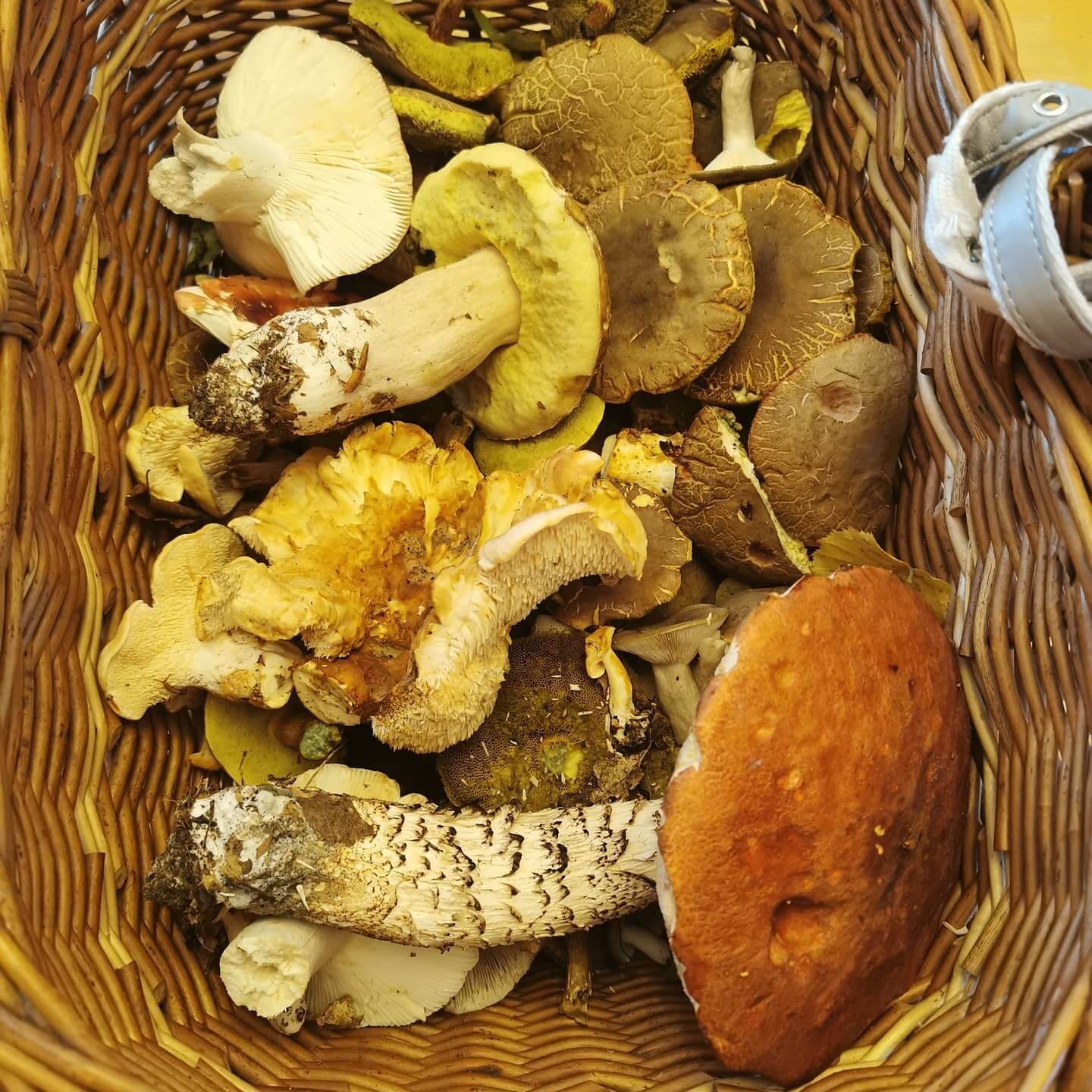
He'd been going into the woods since he was 13 or 14 and learned about the different kinds of mushrooms from several older, experienced people. As an adult, he bought two detailed books about mushrooms which he learned from additionally. Of course, I read them too. There was no internet back then. We still have those books.
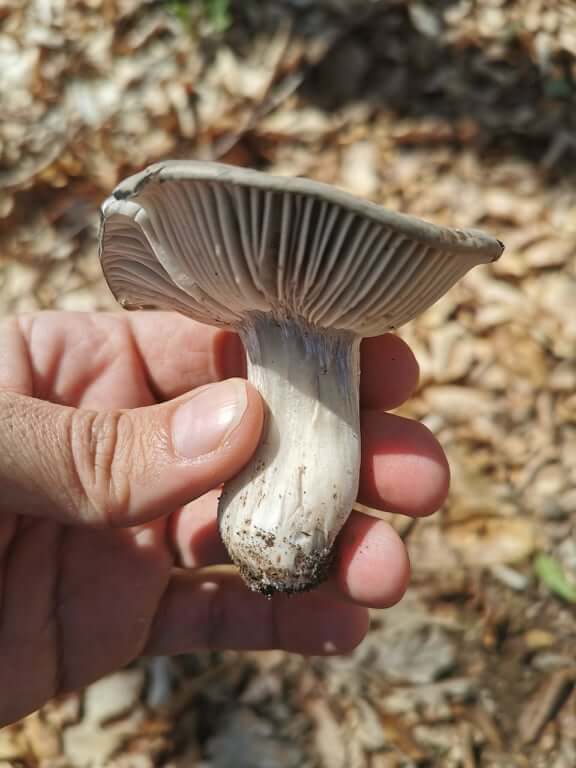
My dad's work was all around Zagreb and Zagreb County. Often, he would take me with him. He has been retired for a few years now. He no longer has the passion for it as he had had back in the years when he worked. But, I still go mushroom hunting in Zagreb County and I love it.
You can find lots of different kinds of mushrooms all over Croatia. I've explored the woods and picked mushrooms across much of the inland of the country.
In Zagreb County, the edible mushrooms I've personally seen are; Morels, Chicken of the Woods and all kinds of Porcini mushrooms. Also, Hedgehog mushroom – one of my favourites to eat - and all kinds of Puffballs. I saw a Giant Polypore recently too, while I was walking on Sljeme.
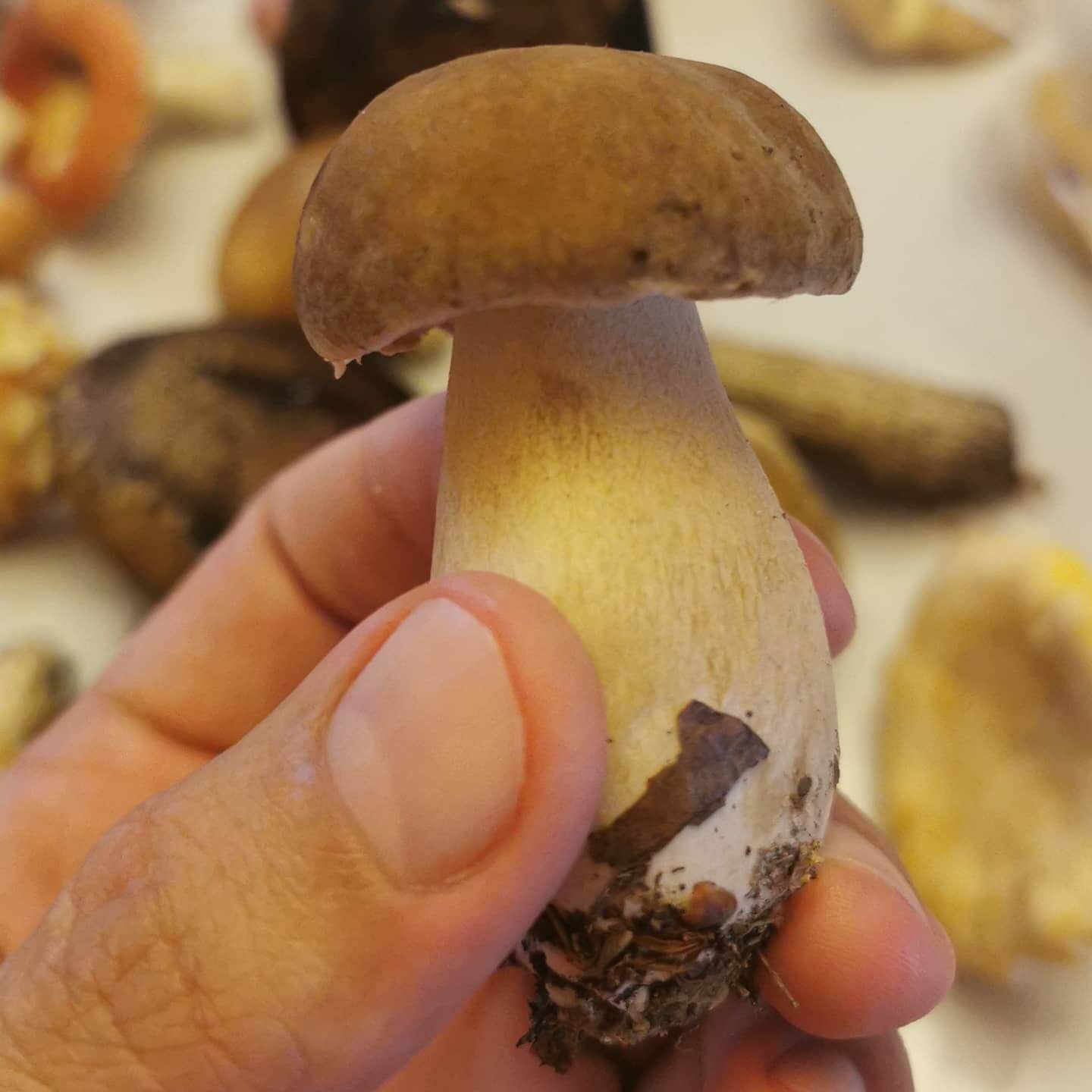
You find Chanterelles and Parasol mushrooms here, sometimes in large numbers. Horn of Plenty and Horse mushroom you also see a lot. Several types of Russula mushrooms grow here. I've never seen a St George's mushroom here. But, I saw and ate them in Slavonia. My father has roots there, so I've visited a lot.
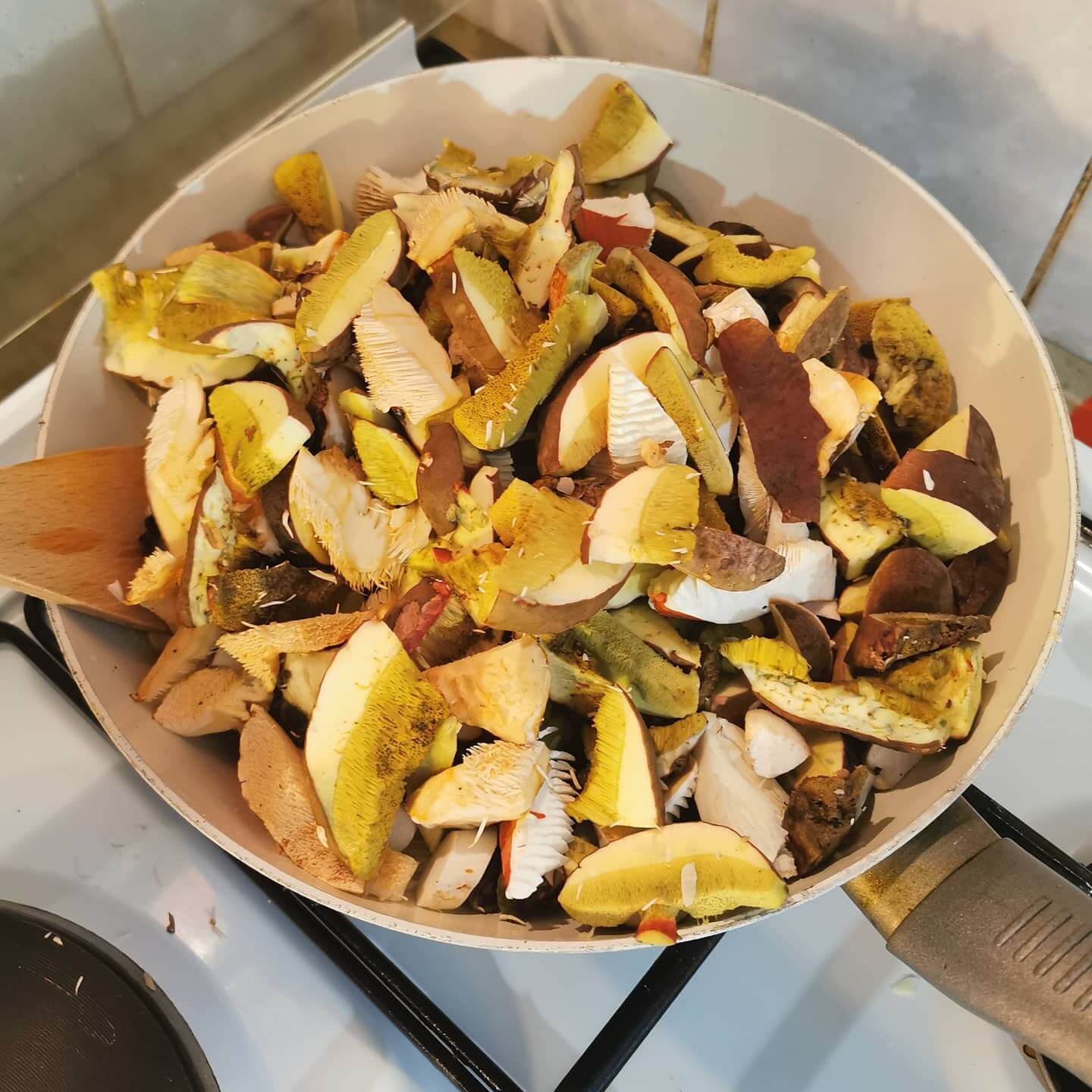
Although autumn is usually associated with mushroom picking, that's actually a widespread misperception. It's true that some of the more popular and well-known wild mushrooms are most common in autumn. That's probably where this thinking comes from.
Actually, mushrooms grow all year round in Croatia. Some kinds you only usually see in the springtime. Similarly, many people believe that you have to go into forests to find mushrooms. But, some edible mushrooms in Croatia actually prefer to live in direct sunlight and you can find them at the sides of fields.
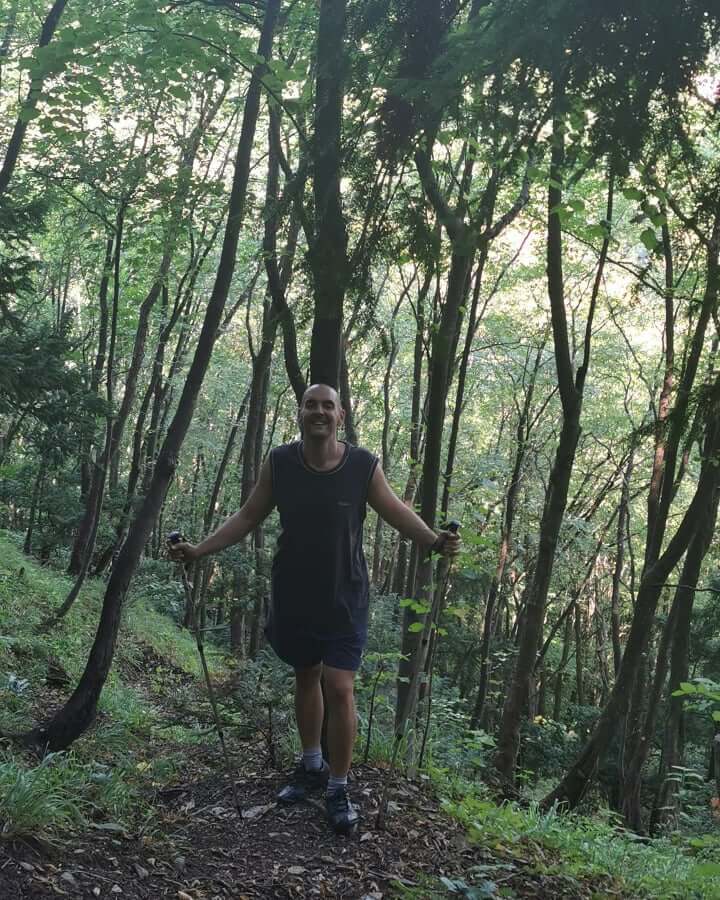
If you want to go truffle or wild mushroom hunting in Zagreb County, it's best to go with a guide. You can find out more about guides and groups from Zagreb County Tourist Board here.
You can see all the different types of edible mushrooms that grow in the wild in Croatia here.
All photos used were taken in Zagreb County and come from the private collection of Hrvoje Banaj, unless otherwise accredited
Honouring Ban Jelačić: Jelačić's Days in Zaprešić Coming in October
September 27, 2021 - In honour of Ban Jelačić, the Jelačić Days manifestation will present both this important protagonist from Croatian history as well as the town of Zaprešić.
Back during the times of the Austro-Hungarian Monarchy, the title of ''Ban'' was a noble title appointed by the monarch, and that person served as viceroy to the Croatian territory. Out of many people to earn the privilege, perhaps nobody is more known and loved by the Croats than Josip Jelačić.
This is particularly great for Zaprešić, a lovely town located (give or take) about 20 kilometres from Zagreb. The official day of Zapruđe is the same as Jelačić's birthday; October 16. In honour of both Zaprešić and the historic personality of Jelačić (who is buried in the town), Zapruđe is the host of Jelačić's Days.
''The central programme of this manifestation is the interactive play called ''A Moment of Memory with Ban''. The unique journey begins with the fun thematic Jelačić train that returns all visitors from the Zagreb Railway Station back to 1849 to the ranch of Ban Josip Jelačić,'' reads the Zaprešić Tourist Board website.
''The goal of Jelačić's Days manifestation is to tell the story of Ban Jelačić as one of the most important persons from Croatian history and revive the historical space of the New Jelačić Palace. With a rich cultural-educational-entertaining programme, we wish to attract as many tourists as possible to come and get better acquainted with Zaprešić,'' the Zaprešić Tourist Board site added.
The aforementioned New Jelačić Palace has been rated by the Zaprešić Tourist Board as a unique monument of cultural and historical heritage.
''Back in 1855, Ban Jelačić built the neo-Gothic chapel of St Joseph on a meadow next to the Palac, when, back in September of 1855, his nine-month-old daughter Ana suddenly died in Bohemia, her body was laid to rest in a vault inside the chapel. Later, the remains of Ban Jelačić (16th May 1859) and his brother Antun (1875) were buried inside the same chapel. When in 1991 works began on the restoration of the chapel, the remains were temporarily moved to Zagreb's famous Mirogoj, and in 1992 they were finally laid to rest in the renewed family vault,'' explains the Zaprešić Tourist Board.
This attractive tourist destination is relatively new, and TCN wrote about it in 2018.
After the aforementioned play detailing Jelačić's life, the rich programme will present an abundance of handicrafts, antiques, workshops, and agricultural products from local manufacturers.
Ban Jelačić (born on October 16 1801 in Petrovaradin, today's Novi Sad in Serbia) was most noted for suppressing the national revolution of the Hungarians in 1848 which wasn't problematic only for the Austrian crown, but for Croatian national interests too, as the Hungarians and Croats didn't really have mutual interests (quite on the contrary).
Whether celebrating Jelačić's birth or death (as TCN covered in May), Ban Jelačić remains a well-remembered person from Croatia's rich and often tumultuous history. Whether in Zaprešić or in Zagreb, whose main square named after Jelačić, he remains the beating heart of the city's daily dynamics.
Learn more about Croatian Politics and History since 1990 in our TC guide.
For more about history in Croatia, follow TCN's dedicated page.
Zaprešić Tourist Board is the First in Croatia to Join Interpret Europe Association
July 31, 2021 - The Tourist Board of the City of Zaprešić is the first tourist board in Croatia to become part of the European Association for Heritage Interpretation: Interpret Europe.
Membership approval came from the Tourist Board of the Croatian National Tourist Board, which supported the efforts and activities of the Tourist Board of Zaprešić in a different approach to destination management, reports HrTurizam. This approach is based on innovative and focused management of the experience and emotions that Zaprešić offers through its content, as well as good stories and the interpretation of heritage through deeper meaning.
The direction of protection of cultural and natural heritage through quality and different interpretations is the basis of the work of the European association Interpret Europe, which was founded in Germany in 2010. Today, it has more than 1,000 members throughout Europe, but also in as many as 57 countries around the world, of which about 50 are institutional. The Tourist Board of the city of Zaprešić is the fourth institutional member coming from Croatia, but also the first destination management organization (DMO) from these areas.
The Tourist Board of the City of Zaprešić has been intensively cooperating with the organization Interpret Europe for the last two years, and they have organized several successful pieces of training and seminars on heritage interpretation in accordance with the Interpret Europe methodology. This is exactly what prompted TZ Zaprešić to establish the "TZZ Academy", which deals with various educations and seminars in the field of tourism and creative industries. The entire work is focused on creating new stories in the destination through a different, innovative, and interesting interpretation.
"This is another valuable recognition, which from now on has marked our city on the cultural map of Europe. Zaprešić has a lot to offer in that sense, but I would certainly like to commend the young team of the Zaprešić Tourist Board who worked diligently to be recognized, presenting our historical and cultural heritage in a different, modern way", said Željko Turk, President of the Tourist Board community and the mayor of Zaprešić.
The Zaprešić Tourist Board points out that their membership is a logical sequence after the organization of education and training for heritage interpreters, but also as a pledge of successful action in experience management, which they certainly want to transfer to a higher level in cooperation with Interpret Europe.
"Our team in the Tourist Board of the city of Zaprešić with their work and activities successfully creates emotions through messages and stories and connecting with heritage at all levels. From the local population, through entities operating in tourism to visitors. We all together create new inspirations for our destination, and thus quality content", said the director of the Tourist Board of Zaprešić Toni Ganjto.
The Tourist Board of the City of Zaprešić is extremely active in several areas of activity - from the management of public tourist infrastructure; coordinating the project of seven (7) associated tourist boards from the area of Zagreb County (KulTurama project); launching the project "Second Perspective" for the inclusion of people with disabilities in tourism trends, all the way to the creation of various innovative content and targeted destination management.
For more on travel in Croatia, follow TCN's dedicated page.
Ban Josip Jelačić Death Anniversary Commemorated This Weekend in Zaprešić
May 21, 2021 - Yesterday marked the Ban Josip Jelačić death anniversary, and the Zaprešić Tourism Board has prepared a series of activities to celebrate its most famous inhabitant.
The 162nd anniversary of the death of Ban Josip Jelačić will be marked by the Tourist Board of the City of Zaprešić on Saturday and Sunday, May 22 and 23, with a special and interesting program for all generations.
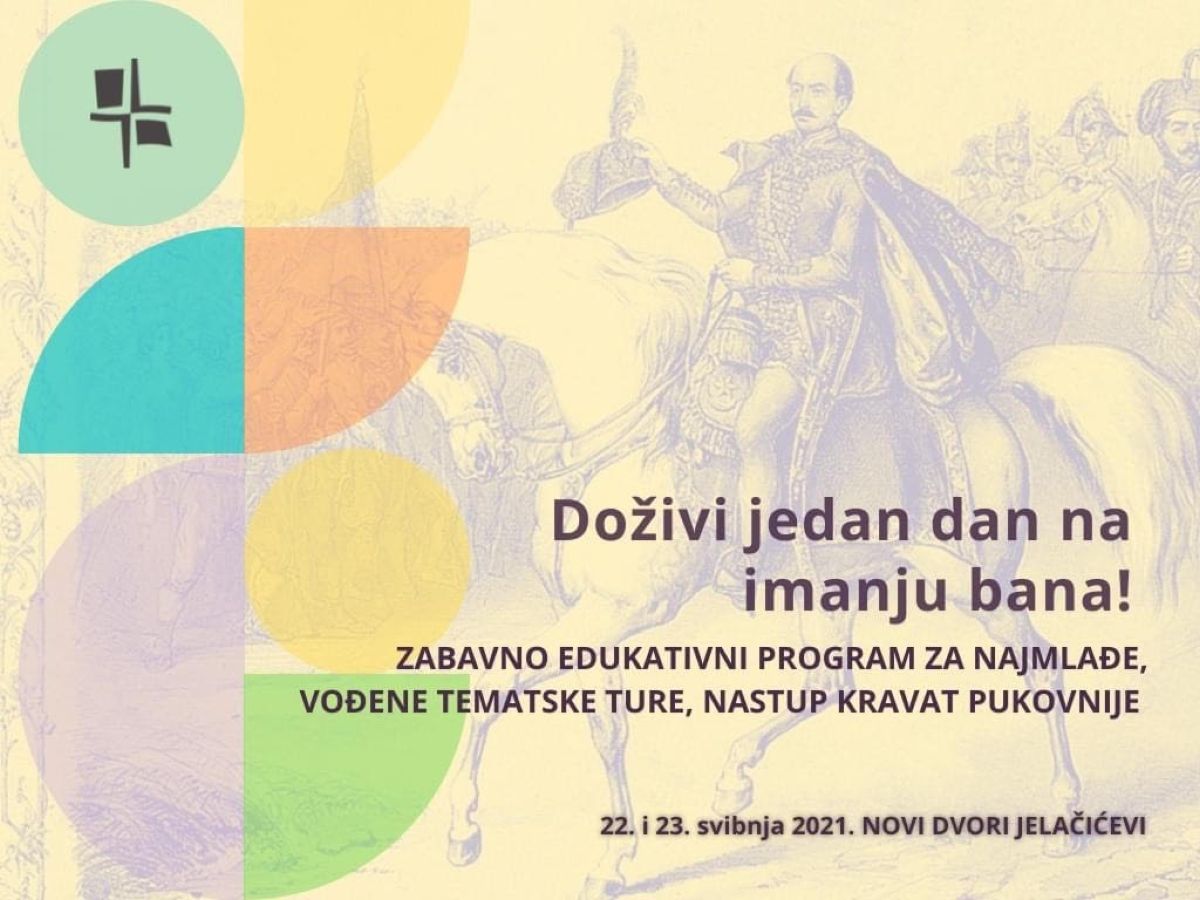
As turistickeprice.hr reports, the program that celebrates the Ban Josip Jelačić death anniversary will be held in the New Palace of Ban Jelačić, and all visitors will have the opportunity to meet the Ban, the Jelačić family, and New Palace through themed guided tours and interesting stories brought to them by costumed characters from the Ban era.
In addition to interesting walks, the Tourist Board is organizing a new fun-educational workshop for boys and girls. Through play, fun, and education, and under the watchful eye of the animators, they will spend one typical day on Ban’s estate. While the children will explore the property, parents can relax and enjoy the beautiful ambiance of the Jelačić New Palace.
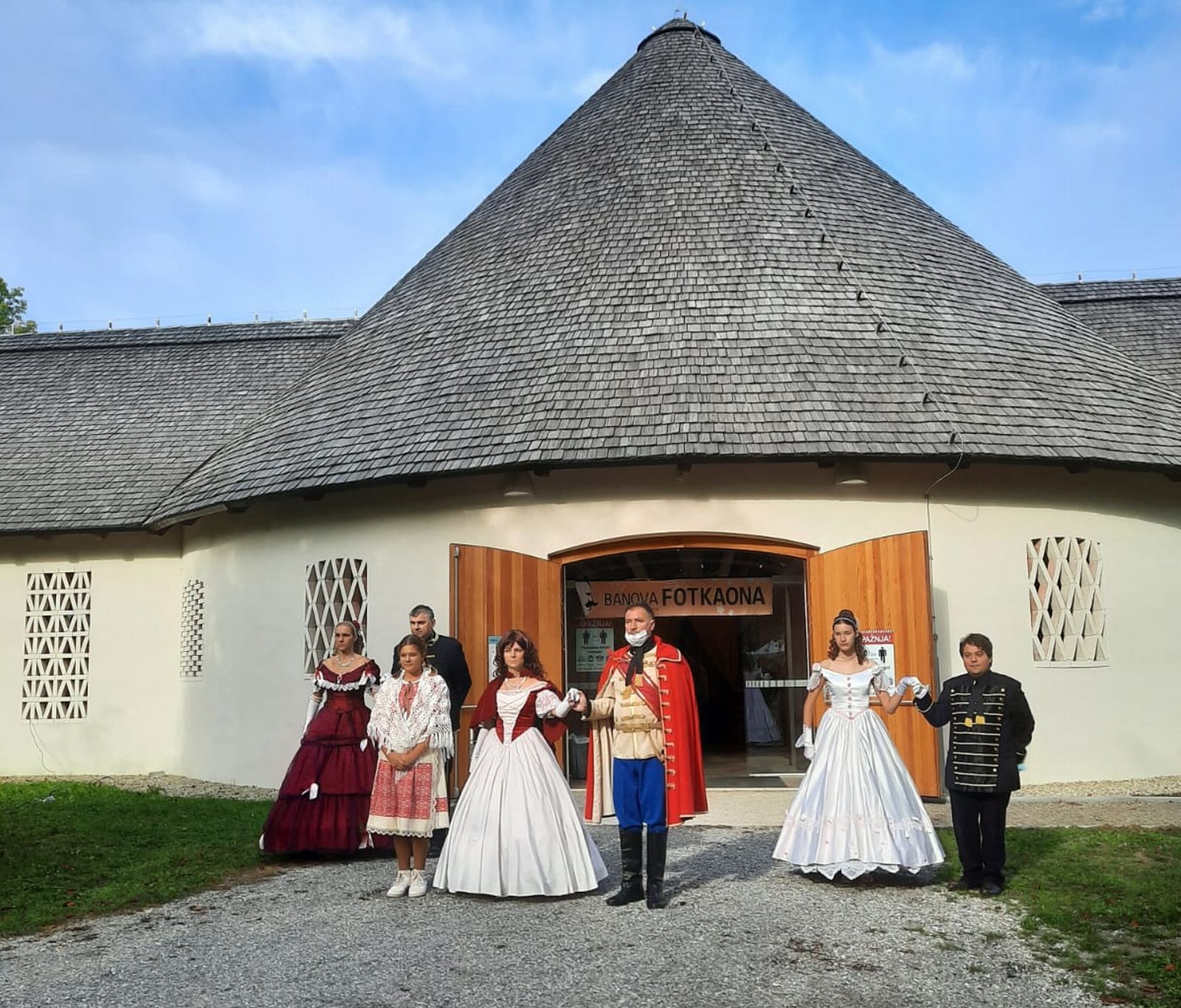
Credit: Zaprešić Tourist Board
This will be an opportunity for the Tourist Board of the City of Zaprešić on Saturday, May 22, to present an educational and entertaining guide for the youngest visitors of the New Palace, as well as the project "Come to Zaprešić". And the performance of the Honorary Company of the Tie Regiment, which will present its program with horses and honor guards, is especially pleasing.
Sunday also brings a guided walk through the streets of the ‘‘City of Zaprešić Love; they also make them from the pages of the novel”, and reveals interesting details of Zaprešić's love stories. In addition to the already well-known tours of the New Courts, don't miss two new guided themed walks called "The Night When the Sky Wept for the Ban" and "Walk through the Ban's Legacy".
During the weekend of May 22 and 23, the Museum and the Tourist Information Center will be open from 10 a.m. to 7 p.m., and admission to the Matija Skurjeni Museum will be free for all visitors.
On Saturday, May 22, the Tie Regiment will pay tribute to Ban Jelačić by laying wreaths and candles, and the Zaprešić Tourist Board invites all visitors to pay homage to the Ban with flowers and candles, thus expressing gratitude and respect for the great of Croatian history.
For more on travel in Croatia, follow TCN's dedicated page.
Tourist Boards in Zagreb County Develop Gourmet and Cultural Tourism
January 19, 2021 – Tourist boards in Zagreb County are uniting in two projects – to develop and promote cultural and gourmet tourism.
The new Law on Tourist Boards and the Promotion of Croatian Tourism encourage the tourist boards' association, both project-wise and formally. Local and regional tourist boards, as well as tourist boards and local self-government units that do not have an established tourist board for their area, may join a project (agreement) association.
Many tourist boards have already taken advantage of this opportunity, such as the Zadar Archipelago and Southern Istria tourist boards, and more recently, the tourist boards in Zagreb County.
Namely, they unite to promote and develop cultural and gourmet tourism. As the Zagreb County Tourist Board director Ivana Alilović points out, their goal is to intensively promote the Zagreb Green Ring region and existing tourist products and programs.
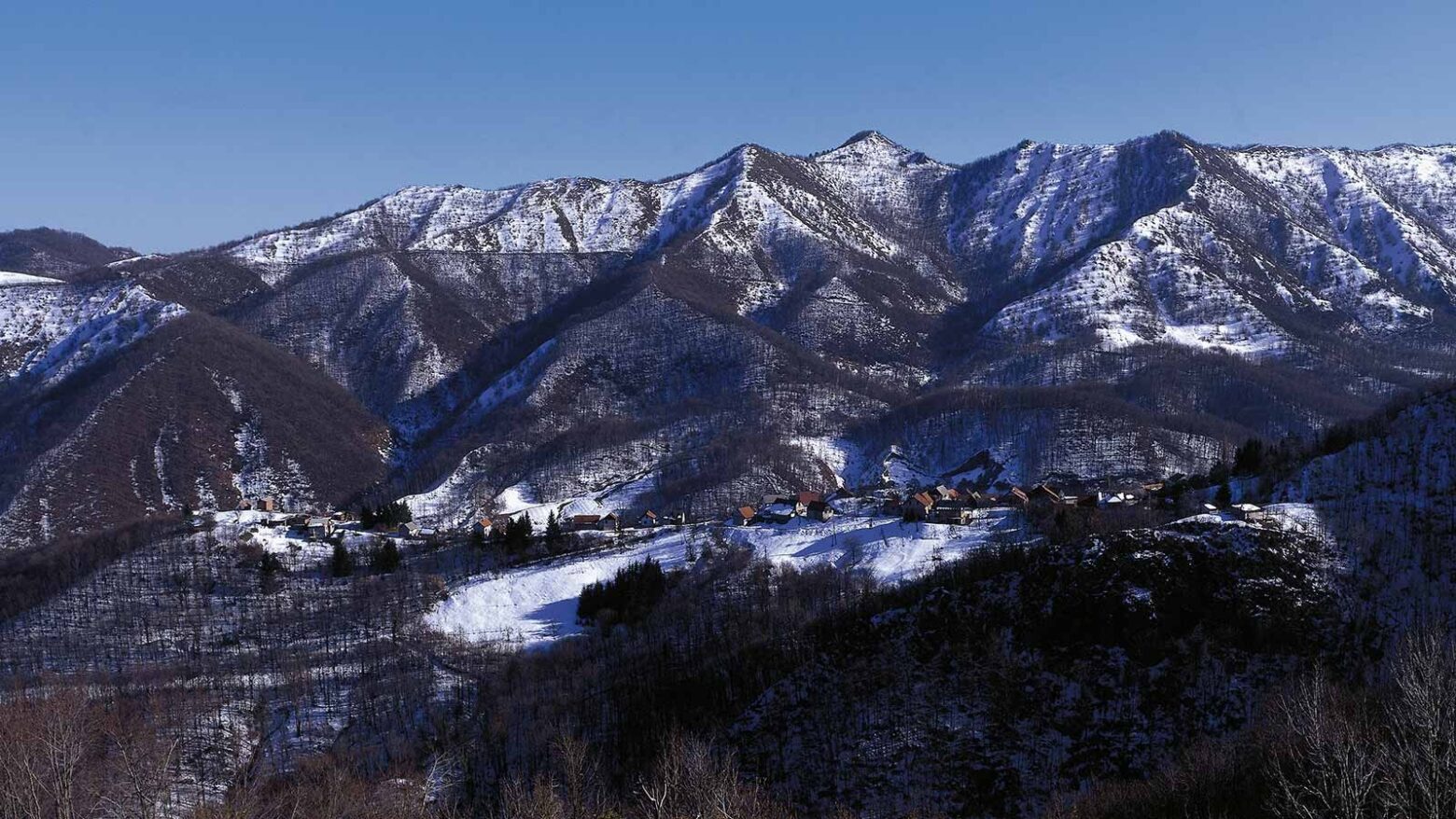
Scene from Zagreb County / Romeo Ibrišević, Zagreb County Tourist Board
"Our goal is integrated quality management of the Zagreb County's tourist destination product, which will reduce the gap between the level of quality that tourists expect and the level of quality that the destination can provide and deliver. Also, we want to improve the quality and content of Zagreb County tourism product, increase tourist satisfaction and tourist spending in Zagreb County and the benefits for entrepreneurship in catering and tourism," says Alilović.
Gourmet tourism in Zagreb County
Local tourist boards of Jastrebarsko, Samobor, and Sveti Ivan Zelina cities have concluded an agreement on the local Zagreb County Tourist Boards' association. In this first project, the joint activity will be the development of gourmet tourism. Wine roads and cheese roads are among the many tourist attractions of rural, eno, and gastro tourism of Zagreb County.
Vineyards and wine cellars in Zagreb County are located on three wine roads – Plešivica Wine Road, Zelina Wine Road, and Samobor Wine Road. Along wine roads, you can find Purtugizec Plešivica and Kraljevina Zelina wines from the Zagreb County brand, as well as Bermet, a traditional and widely recognized Samobor aromatized wine.
Also, there are wines produced from indigenous varieties Plavec yellow, sweet Zelenac, and Šipelj, and many other wines such as Chardonnay, Sauvignon, black, gray, and white Pinot, Rhine Riesling, Traminer, Frankovka, Škrlet, yellow Muscat, Šipon.
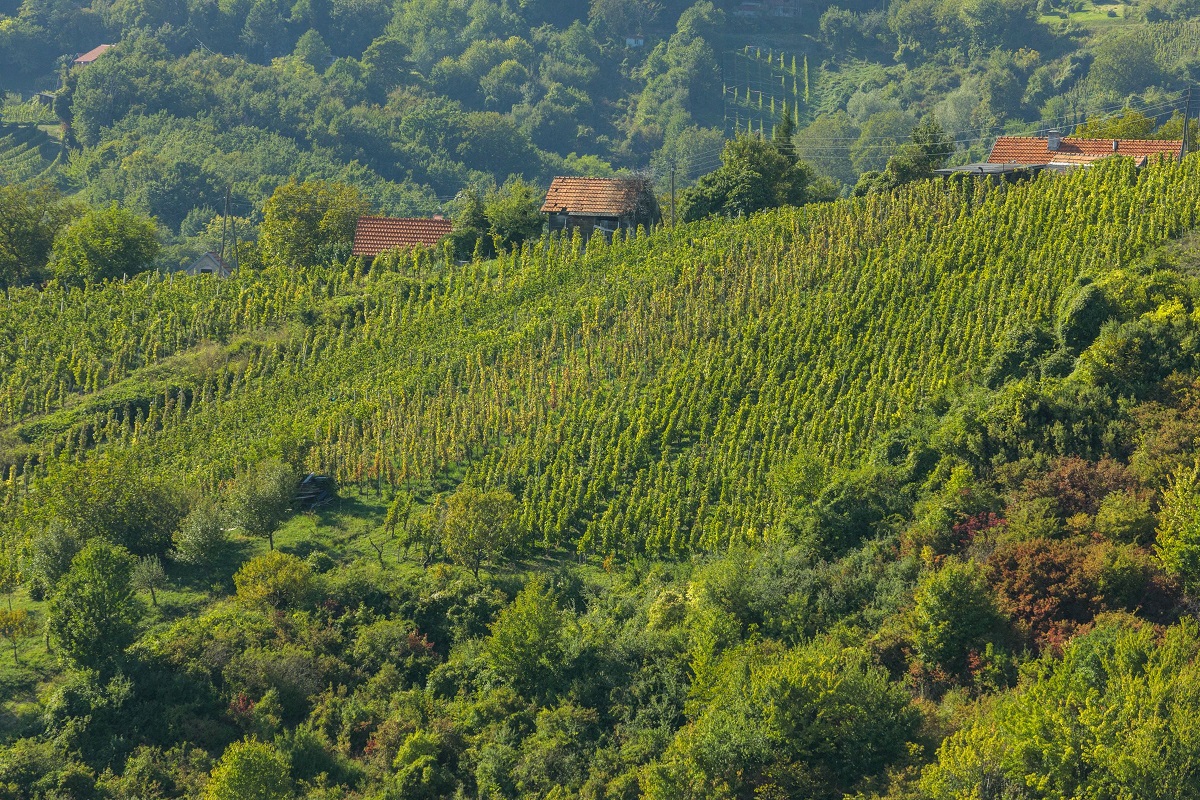
Vineyards in Jastrebarsko / Copyright Romulić and Stojčić
The main goals of the association through the gourmet tourism project are:
- The smart specialization of Zagreb County.
- The development of a tourist destination for gourmet tourism.
- Improving the value chain of gourmet tourism.
- Digitalization and application of new technologies.
- Multi-sector connectivity.
- Development of local production systems (Agri-food).
- Positioning and promotion of Zagreb county.
Cultural tourism in Zagreb County
Cultural tourism in Zagreb County is based on protected natural heritage and cultural and historical heritage. Zagreb County has a rich treasury of natural heritage and beauty. It has many protected natural areas, which contribute to the development and success of cultural, hiking, picnic, and sustainable tourism in Zagreb County.
The association project aims to establish a basis for the integrated management of cultural tourism. Alilović says they want to create a recognizable tourist destination product that will be the main instrument for encouraging tourism competitiveness in Zagreb County. She adds that cultural resources are the leading destination's product in the promotion of a tourist destination, and what makes one destination different from the other is its intangible cultural heritage.
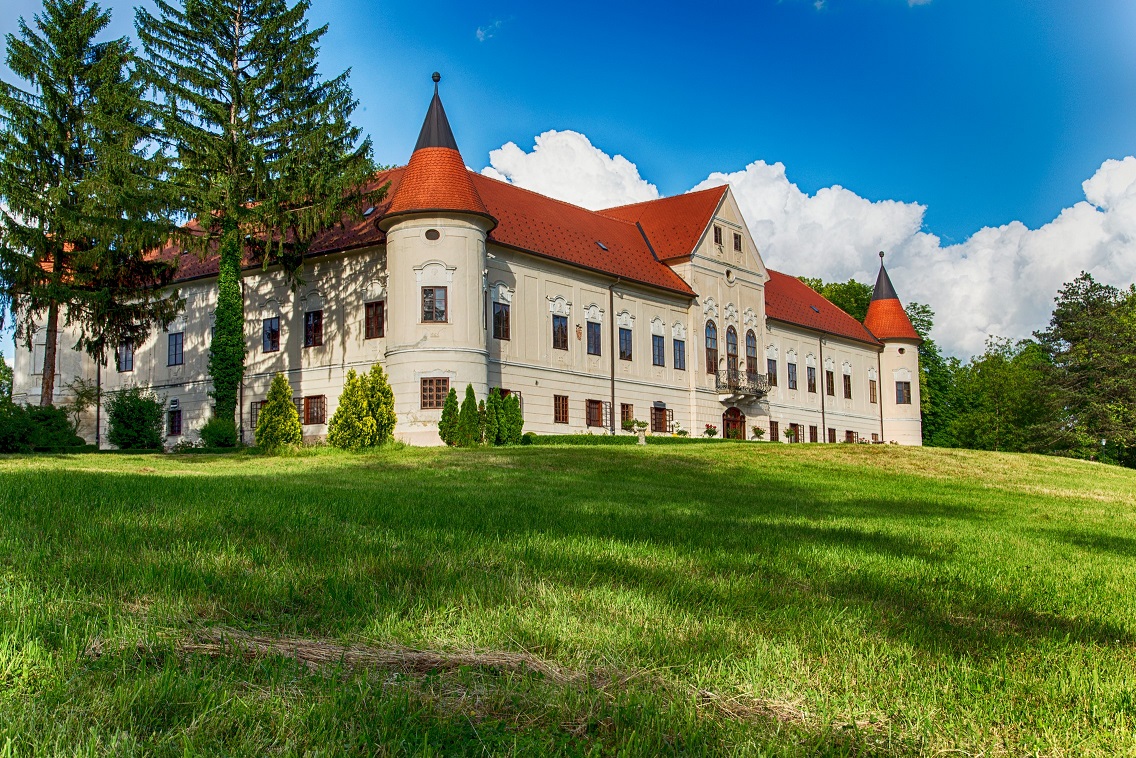
Lužnica Castle, Zaprešić / Zagreb County Tourist Board
"Heritage is the essential element by which a tourist destination's management attracts tourists to the destination. It is an attractive basis for branding. Creativity based on traditional intangible heritage thus pushes the boundaries of the mere functionality of a product.
Through the example of a cultural thematic route, we seek to show how myth can become a potential attractive basis for the development of mythological tourism in Zagreb County. The thematic route's stories and locations offer a choice according to criteria of collective and personal importance. Therefore, the thematic route is an open system that can be toured individually or organized with expert tourist guidance.
Special attention was given to the local identity. For example, the customs of St. George and St. John were highlighted, as well as other customs that are traditionally woven into the Zagreb County and surrounding regions," says Alilović.
The tourist offer of Zagreb County abounds in cultural and historical heritage, such as stories and legends, wooden construction, sacral construction, indigenous architecture, and archaeological finds and monuments of its rich past.
Zagreb County can also boast more than 200 cultural and historical heritage sites. Among them, castles Novi dvori Jelačićevi are a unique example of a complete manorial-economic complex preserved to this day. Then there are forts, manor houses, rich wooden sacral heritage, of which the most prominent is the chapel of St. Barbara in Velika Mlaka. A beautiful example of autochthonous secular architecture is the manor house (curia) Modić-Bedeković in Donja Lomnica. A special attraction is the memorial room of Alojzije Stepinac in Krašić.
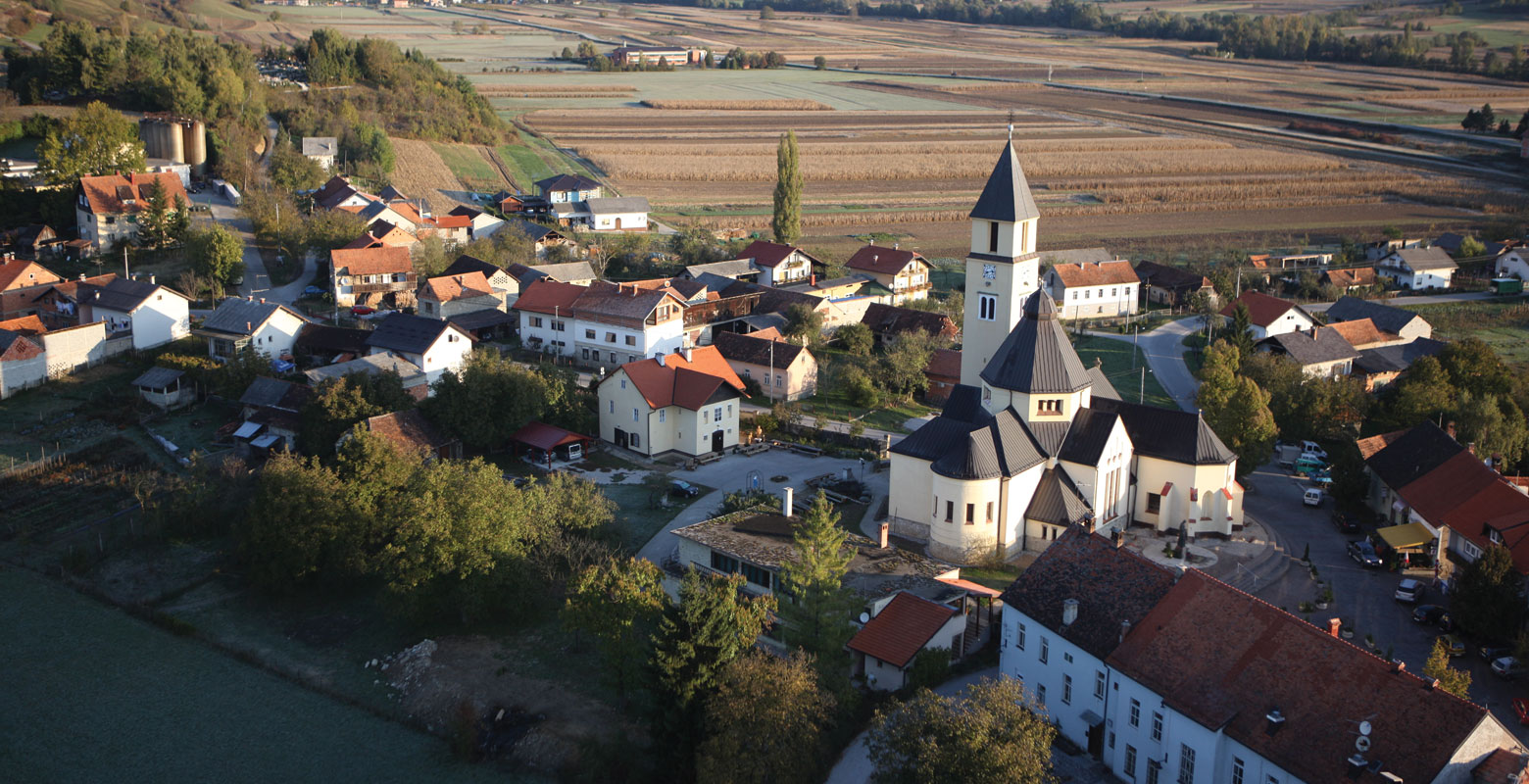
Krašić, Zagreb County / Zagreb County Tourist Board
Valuable is the archeological finds in Ščitarjevo, not far from Velika Gorica, and Budinjak (10th-6th centuries BC), one of the most important prehistoric archaeological sites in Croatia.
The project area includes the tourist boards of the cities of Zaprešić, Velika Gorica, Vrbovec, and Dugo Selo, the tourist boards of the municipalities of Pisarovina and Krašić, and the tourist board of area of the Sava-Sutla valley and hills.
"Agreements of project association in the Zagreb County Tourist Board are an example of planned activities. It is clear that the destination through joint action has the opportunity to better position itself in the market and develop projects that will stimulate overall economic development," said Alilović.
Alilović concludes that the association should result in numerous synergy effects. Not only in quality but also much-needed cost-effectiveness of promotion and project implementation.
For the latest travel info, bookmark our main travel info article, which is updated daily.
Read the Croatian Travel Update in your language - now available in 24 languages.
Join the Total Croatia Travel INFO Viber community.
Pasta Manufacturer Opens 38 Million Plant
ZAGREB, October 13, 2019 - A new plant of Croatian fresh pasta manufacturer Naše Klasje, in which over 38 million kuna has been invested, was inaugurated near Zaprešić, just west of Zagreb, on Saturday.
The plant spreads over 3,000 square metres. The European Regional Development Fund co-financed the project with 15 million kuna.
Inaugurating the plant, Deputy Prime Minister Davor Božinović said this investment was an example of good synergy between entrepreneurs and local government, and that it was in line with the government's policy of partnership with local government.
"It's important to create conditions so that companies like Naše Klasje can progress and expand production. It's the only way we can move forward, create new values and connect innovation, knowledge and tradition," he said.
Naše Klasje owner and director Zoran Šimunić said the company's goal was to boost exports. Over the past seven years, the company has been exporting over 35% of its product and the goal is to surpass 50%. The company exports to ten countries, from Greece to Germany, and a contract was signed last week to export to Sweden.
Šimunić told reporters Croatia still did not produce enough pasta and that import was considerable, although it dropped from 94% in 2000 to 50% in 2009, despite a constant rise in consumption.
Croatian Chamber of Commerce president Luka Burilović said the food industry accounted for the highest share in total employment and GDP, and that agricultural and food products accounted for 14% of commodity exports last year.
Over the past 20 years, pasta production in Croatia has faced increased competition due to the liberalisation of the market, which prompted some companies, including Naše Klasje, to see this market openness as an opportunity and invest in new plants to increase production and exports.
Naše Klasje employs 40 people and plans to hire another 12. It was established in 2001 as a greenfield investment in food production.
More business news can be found in the dedicated section.
EU Funds Aid Croatian Capital Projects In Realisation
Many places in Croatia have been making good use of EU funds, but others need time to catch up. The opportunities provided by accessing the funding has been showcased in one excellent Croatian example, Zaprešić.
As Poslovni Dnevnik writes on the 27th of December, 2018, last Friday, Zaprešić was the final host of the Regional EU Funds seminar for this year. The seminars aim to inform the public about the funding opportunities provided by EU funds by the Ministry of Regional Development and EU funds.
Zaprešić is just one example of good EU funds practice, and this is also backed up somewhat symbolically by the fact that the education seminar about the use of EU funds was held in the Vršilnica building, which was rebuilt with the very welcome help of 4,855,637.50 euro, co-financed by European structural and investment funds.
EU funds are one of the key sources of funding for urban investments and large capital projects across the Republic of Croatia, without which the City of Zaprešić simply could not have realised many projects. As explained by Mayor Zeljko Turk, in the period from 2017 until now, nearly 33 million kuna of contracted funds outside of the city budget have been spent, which have helped to deal with large capital projects, raise the overall quality of life, and accelerate the development cycle of Zaprešić in general. The fact that EU funds are a huge part of Croatia's present and future, was emphasised by the state secretary at the Ministry of Regional Development and EU funds, Velimir Žunac.
"We're the youngest member of the European Union, so we're learning, growing and maturing at the same time, and this government has made significant gains. Back in January 2017 we contracted a mere 9 percent of EU funds, and this year, we'll be at 60 percent, that speak volumes about how successful we are,'' stated Žunac.
The 2017 economy analysis shows that the most prominent economic branches in Zaprešić are trade (23 percent), followed by service activities (16 percent) and professional scientific and technical, construction and manufacturing industries, holding a total of 33 percent.
"The city is doing a lot to improve the infrastructure and conditions for its entrepreneurs, and for this purpose, funds amounting to 6 million kuna have been secured, and this is 100 percent co-financed with European Union money in the entrepreneurial zone in Pojatno, where a completely new road will be built which will attract new businesses and create new jobs,'' said the head of the Zaprešić finance and economic development department, Miljenko Šoštarić.
Satisfied entrepreneurs are the souls of the city, and just how it is to actually be an entrepreneur in Zaprešić, with his own experience of using the EU contribution, is the owner of the Mihaliček company, which employs 50 people with a turnover growth of 10 to 15 percent per year.
"We applied for the tender because the appetities within our company grew, we developed new jobs and got more people. We applied for a crane and a laser machine for installing and processing concrete, and we received 300,000 kuna in non-refundable funds, which was 55 percent of our investment,'' said Stjepan Mihaliček, stating that such a form of contribution to them was relevant because renting or buying used machinery could be at the expense of safety in the workplace.
''In order to encourage as many entrepreneurs as possible to use EU funds, entrepreneurs may submit their email addresses to receive a newsletter containing all the available information on various financing options, including funding opportunities from EU funds with the aim of developing new business ideas and boosting competitiveness on both domestic and foreign markets,'' explained Šoštarić.
Make sure to stay up to date with our business and politics pages for more information on EU funds, how Croatian companies can make use of them, and for everything going on in the political and business world in Croatia.
Searching for Cheaper Apartments? Njuškalo Provides an Insight
On the lookout for an apartment?
Cause of Death Revealed for Man Who Died Waiting for Ambulance
ZAGREB, August 21, 2018 - The cause of death of 21-year-old Matteo Ružić, who died in the street last week in Zaprešić, just north of Zagreb, was asthmatic bronchitis and an undiagnosed heart defect, officials of the Ministry of Health reported on Monday presenting the results of an autopsy conducted by the Zagreb-based Institute for Forensics and Criminology.


